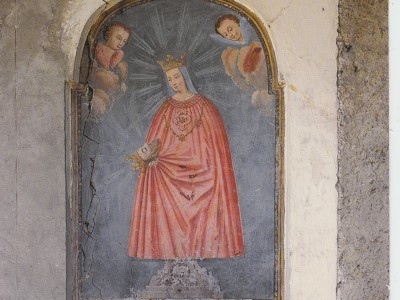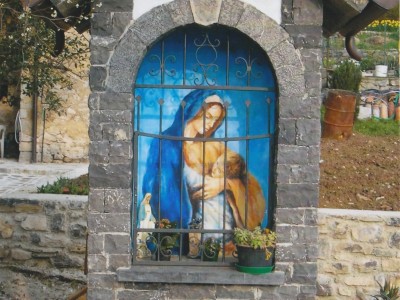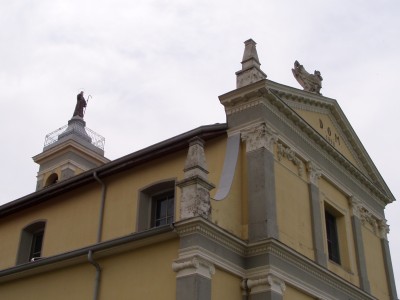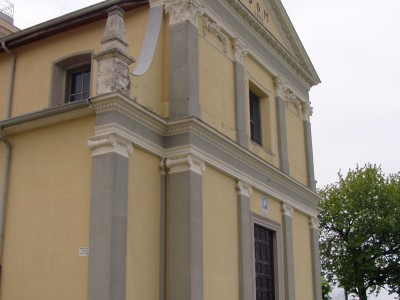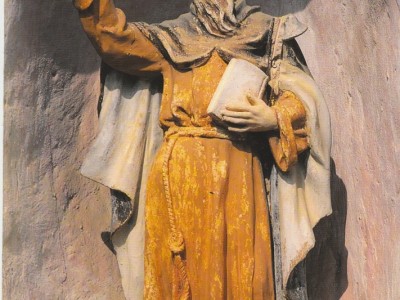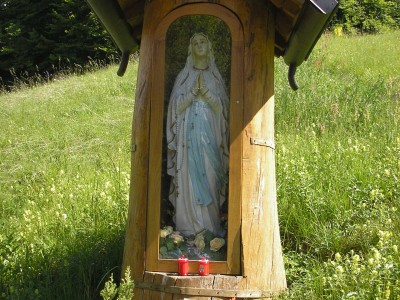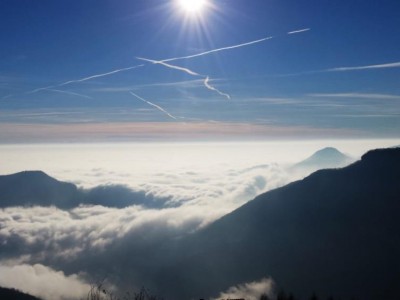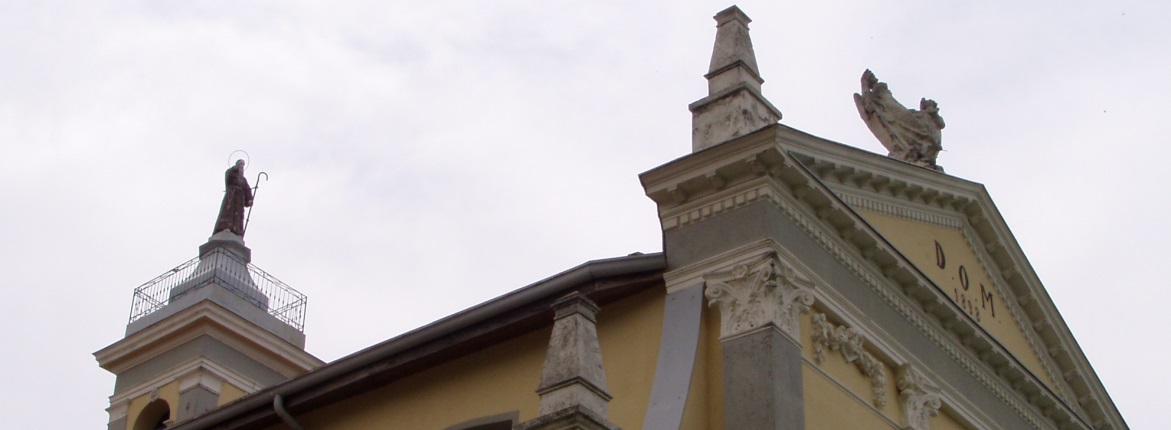
Sant’Antonio Abbandonato lies 987 meters above sea-level, on the ridge of the mountain between Brembilla Valley and Brembana Valley. The two main quarters are Castignola di Qua and Castignola di là, including Cais, Stalla and Moia and the small centre of Muraca.
The old quarter of Castignola di Là is located between Castignola di Qua and Muraca and it is easily reachable nowadays thanks to the road also suitable for vehicles that goes down from the church of S. Antonio. It is one of the oldest settlements in the town of Brembilla. Castignola is, in fact, already mentioned in the episcopal census in 1250 for conventions about land lease. It is mentioned again in the following censuses in 1303 and 1312. During the fights between Guelphs and Ghibellines in 1392, the Guelphs from Zogno assembled in Castignola to go to Domus Tremeri (Catremerio), where they raided 150 cows and 250 sheep. Castignola was the fighting scene between Guelphs from Zogno and Ghibellines from Brembilla, especially on the borders. In the archives in Venice there are still hundreds of files concerning disputes between families from Castignola and Muraca. Since its origins, Castignola is divided into two quarters, di Qua and di Là (“here” and “there”). The separation is due to a small valley between them. Castignola di Là seems to be the oldest; it is crossed by a road named "Strada Taverna", one of the most important connecting road at the bottom of the valley on the side of Brembilla, but it also reached the Brembana Valley through the pass of Crosnello, via Sussia. In an old house in Castignola di Là, you can find the typical peasant atmosphere, characterised by an inside chemney without the smoke mouth on the roof, the kitchen, small windows and dark-stoned floor. Inside, there is still part of the original furniture, outside you can see the typical wooden stairs and, on the upper floor, a very well-designed sink encarved in the stone. Behind this house, you can see the engraved date 1607 and, on another one close to it, the date 1588. About 50 metres far, parallel to it, there is another sixteenth century building, known nowadays as "Caìs". In the inferior area of this centre, on the entrance portal, you can observe the crest of family Sonzogni (Parmesà) and the engraved date 1791. The current centres of Caìs, Contrada and Moia are part of the old quarter of Castignola di Là. In 1830, 67 people lived here, divided into 12 peasant families.
The older part of Castignola di Qua (Casgnöla) is situated at the end of a plateau, at the beginning of a modest hill, while the more recent part developed going up the mountain sides. One of the most ancient buildings is 'Ol palazz' (the palace) of Pesenti family (Taècc); on the left side of the portal, the date 1585 is engraved. The older part of Castignola was equipped with an oven to cook bread, until the 40’s. A centuries-old mulberry-tree proves that silkworms were breeded here. In 1830 76 people lived here, divided into 10 peasant families. Until the early twentienth century, the peasant centre suffered from the lack of springs in the area, therefore, the inhabitants were forced to go to the spring of 'fontanì di Frà', while they had to go to 'al Poz' (the well), fifteen minutes far from there, in the area of Caraine, to water animals.
The Church of S.Antonio
Several documents dated 1440 mention a small chapel devoted to Saint Anthony in the quarter of Castignola. The parish priest Marchisio of Frati Serviti in Zogno celebrated here sunday masses in 1487. In 1500 an hermit who was also a priest was hosted; after him, a priest used to go there from Brembilla for masses and catechism. At the beginning of the nineteenth century, thanks to a fund granted by some devotees to S. Antonio, a newer and wider church was built perpendicular to the previous one.
The new parish was set up on 22nd July 1887 by Bishop Guindani and includes the following areas : Prisa Alta, Prisa Bassa, Zernione and Colle belonging to the town of Zogno; Castignola di Qua and di Là, Tiglio, Moia, Caìs, Muraca and Stalla belonging to the town of Brembilla. The church is further enlarged of 7 metres and equipped with a sacristy.
The fresques on the vaults were painted by Umberto Marigliani, who represented scenes of life in S. Antonio, the evangelists, Saint Charles and Saint Gregory Barbarigo and the eucharistic banquet, over the altar . The painting by Carlo Ceresa (1630) was brought from the old church , representing: Christ Crucified, Saint Sebastian, Saint Rocco, Saint Francis from Assisi and Saint Nicholas from Tolentino. The altar-piece of S. Antonio Abate, local patron saint, with Saint John Baptist and Saint Laurence, patrons saints of Brembilla and Zogno respectively, has a good artistic value. The altar-piece of the Nativity by Abramo Spinelli, dating back to the early twentienth century, is also interesting. In 1940 the Via Crucis, later work by Gaetano Perarda, was added.
HIKES
Some very interesting and pleasant hikes start from Sant’Antonio, for example the hike to Mount Zucco and the hut G.E.S.P, or also going to Catremerio and up to the mountain tops of the area, like Castello della Regina (mt.1424) for 2 hours walk, Corna Camoscera (known as “Còren”), mt.1343, characterised by white vertical walls made of solid limestone, stretching for over 200 meters, Foldone mt. 1502, path CAI 595 and, a bit further, Sornadello, mt. 1580.
The «Strada Taverna» reaches S.Antonio, through path CAI 592, that, departing from Ponti di Sedrina, leads to the centre of S.Antonio and then goes towards Catremerio, Crosnello and the pass to Sussia di San Pellegrino Terme, uninhabited area, with the small church of Saint Michele.
© 2024 Pro Loco Val Brembilla - Via Libertà, 29 24012 Val Brembilla (BG) - P.IVA 03826220166
388-7777354 - prolocobrembilla@gmail.com
| Privacy Policy

